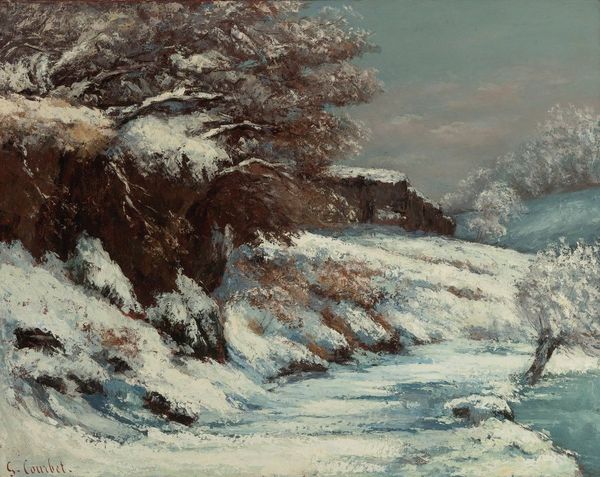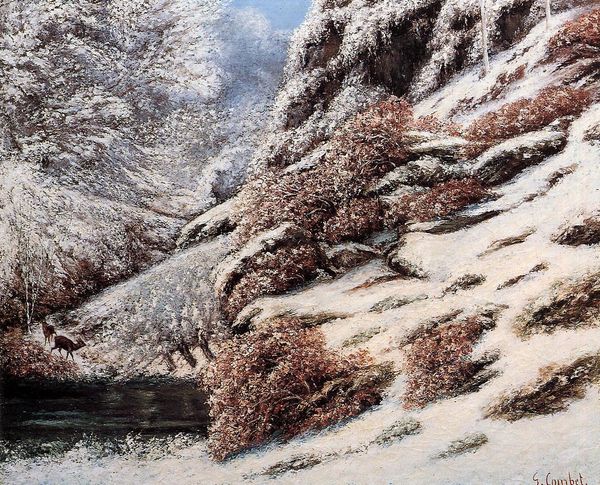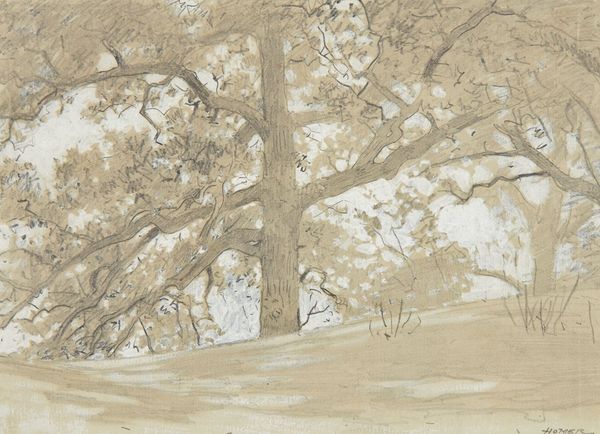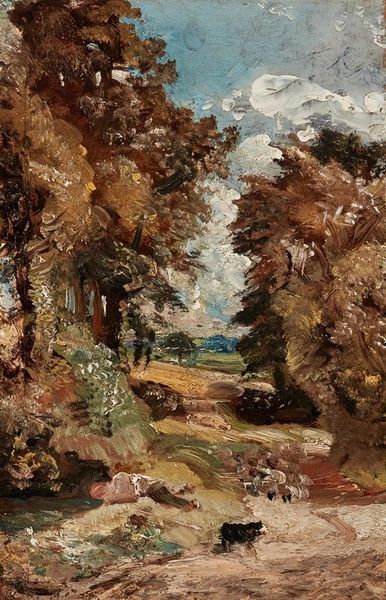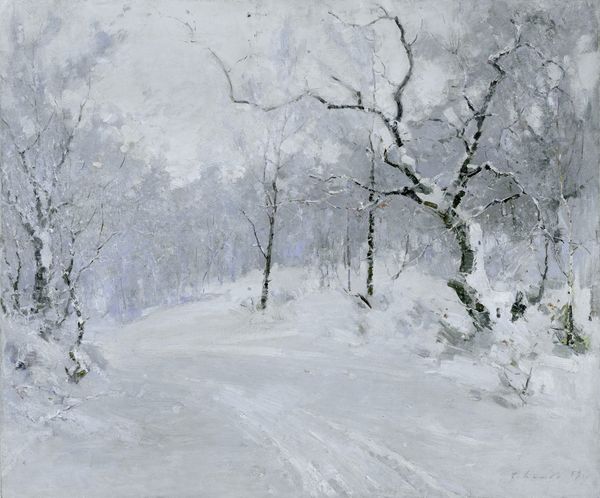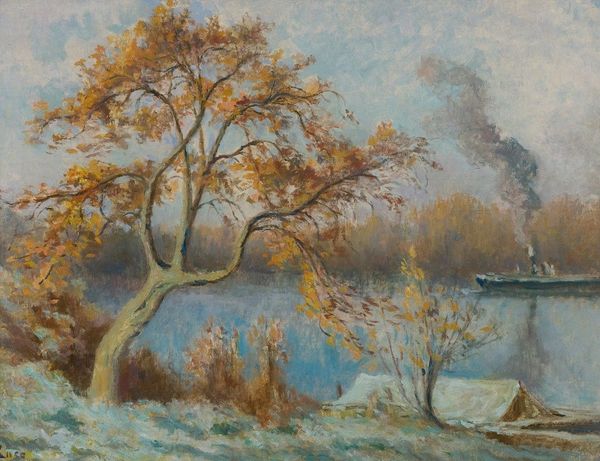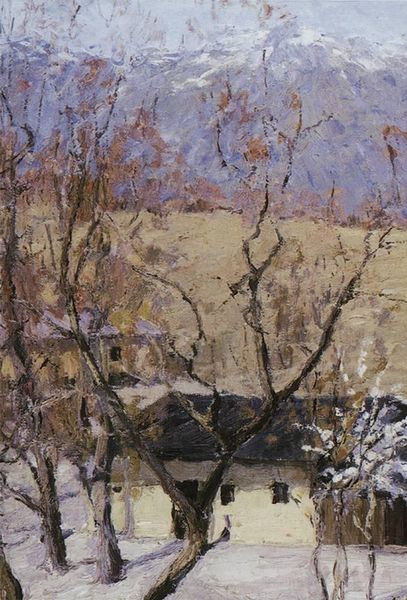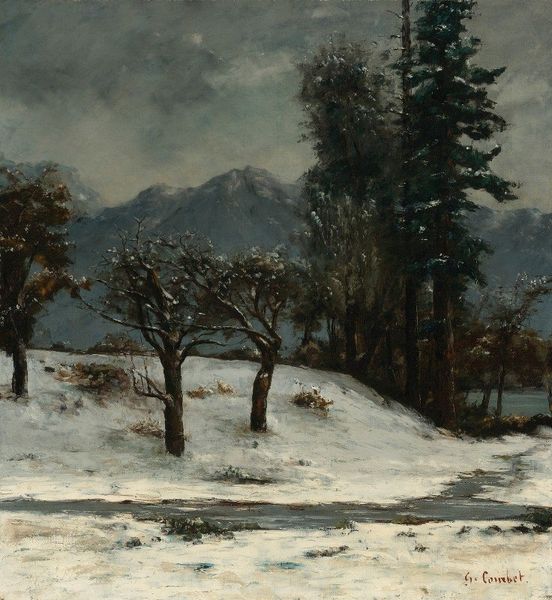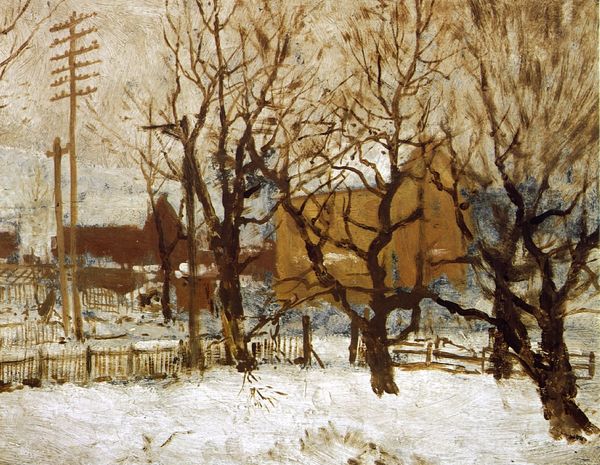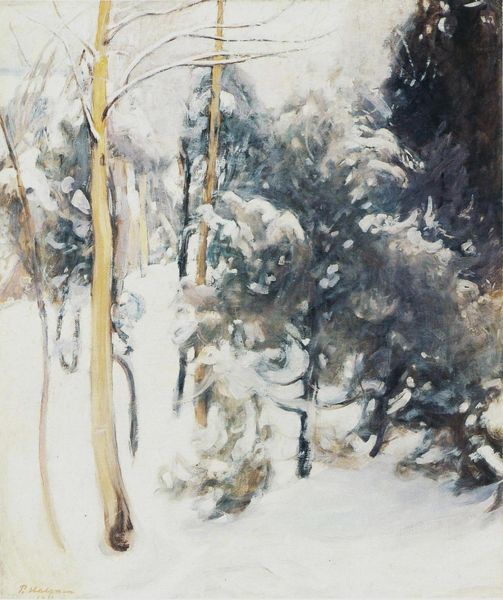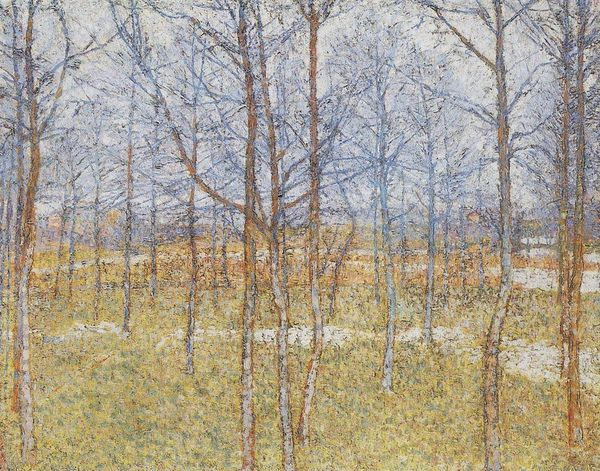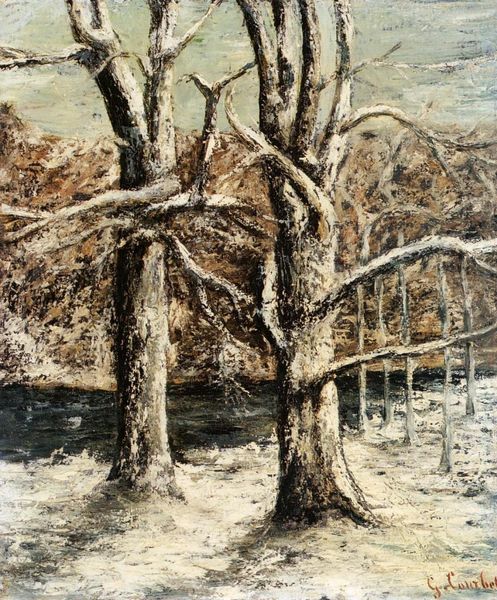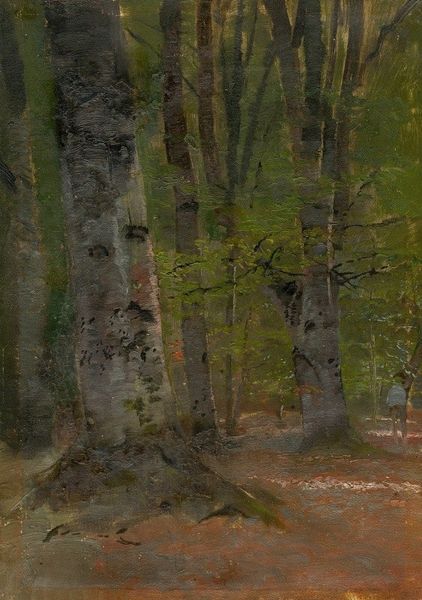
Copyright: Public Domain: Artvee
Curator: Here we have Gustave Courbet's "Fawn in the Snow in the Woods," created sometime between 1865 and 1877. It's a striking example of his commitment to realism. Editor: My immediate reaction is…bleak. There's this sense of isolation, a quiet struggle for survival etched in the landscape. The snow isn't pristine; it's muddied, almost oppressive. Curator: That muddied quality is key. Snow often symbolizes purity, but here, it feels weighted down. And yet, consider the fawn, a classic symbol of vulnerability and innocence. It disrupts the harshness. There's a cyclical renewal suggested through the wildlife despite the environment, perhaps representing nature's indifference. Editor: But is it indifferent? Or is it a site of contestation? The presence of a fawn signifies something specific when taken in context with Courbet’s anti-establishment beliefs. The romanticization of wildlife can stand as commentary for humanity. How often is nature and its animals pushed to the edge to make room for the growth of human culture and capital? Curator: That's a fascinating perspective. Consider the use of matter painting—he didn’t simply apply paint but built it up, almost sculpted the canvas. Doesn’t that physical manipulation amplify the harshness of the depicted environment? Editor: Absolutely, there's a sense of struggle embedded in the texture itself. It reminds me of land art—except he is re-creating a smaller scale representation of nature. A struggle for survival embedded within his art could be paralleled by the lower classes simply surviving. There are social implications to this seemingly neutral landscape. What stories do we not see because we are trained not to see them? Curator: Perhaps by making visible the struggle for survival in art, Courbet elevated it to a realm of contemplation—insisting we acknowledge the fawn’s—and, metaphorically, other lives’—precarious place in the world. It encourages empathy, after all, isn't all of Courbet’s art designed to stir emotions by presenting nature “as it is”? Editor: It certainly provides the possibility. But with modern eyes and an activist’s bent, the work forces deeper questions: What haven’t we done to help change the landscape and elevate life? Curator: I appreciate the invitation to dig deeper and bring a modern outlook to an old debate! Editor: Likewise, It's enlightening to uncover the symbolic richness, to go beyond a surface-level understanding. Thanks!
Comments
No comments
Be the first to comment and join the conversation on the ultimate creative platform.
